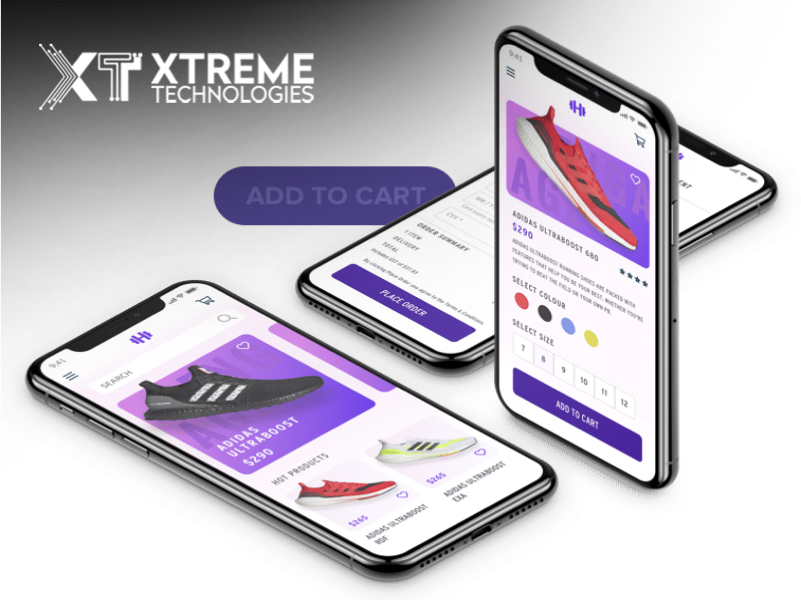
11 Top Tips for Outstanding Ecommerce Website Design
All, Digital Marketing, E-commerce-business,
Published on: May 25, 2023
Contents
hide
In the rapidly evolving digital landscape, the significance of an exceptional ecommerce website design cannot be overstated. It serves as the differentiating factor between triumph and failure for online businesses. As competition intensifies and user expectations continue to evolve, it is imperative to create a captivating and user-friendly shopping experience. This article aims to provide 11 invaluable tips that will enable you to craft an ecommerce website design that not only mesmerizes visitors but also converts them into loyal customers, fostering sustained engagement.
User-Centric Design:
At the core of any triumphant ecommerce website design company lies the prioritization of your target audience's needs and preferences. It is crucial to embark on comprehensive research endeavors to gain insights into your users' demographics, behavior, and desires. Armed with this knowledge, you can create an interface that is both intuitive and user-friendly, augmenting the overall shopping experience significantly.
Clear Navigation:
Seamless and intuitive navigation forms the backbone of any exceptional ecommerce website. It serves as the roadmap for users, allowing them to effortlessly find their desired products. Organize your product categories in a logical manner and ensure that your menu is not only prominently displayed but also user-friendly. Implement breadcrumb trails, search bars, and filters to empower users in their journey of product discovery.Mobile Optimization:
With the proliferation of mobile devices, optimizing your ecommerce website for mobile compatibility is not a luxury but an absolute necessity. Ensure that your design is responsive and adaptable to various screen sizes, guaranteeing a flawless experience across devices. Streamline the checkout process and simplify forms to accommodate the preferences of mobile users, ultimately enhancing the likelihood of conversions.
High-Quality Product Images:
Visually captivating product images play a pivotal role in captivating and engaging potential customers. Investing in high-quality, professionally-shot images that exhibit your products from various angles can make a substantial difference. By incorporating features such as Zoom and 360-degree view functionalities, you offer users an immersive experience that empowers them to make well-informed purchase decisions.
Streamlined Checkout Process:
A complex and protracted checkout process has the potential to dissuade customers and contribute to cart abandonment. Simplify the checkout process by minimizing the number of steps required and requesting only essential information. Offering guest checkout options and enabling saved payment details for returning customers can expedite the process, consequently improving conversion rates.Trust Signals and Security:
Establishing trust and instilling confidence in your customers are critical components of ecommerce success. To achieve this, prominently display trust signals such as security badges, customer reviews, and ratings throughout your website. Additionally, prioritize the implementation of robust security measures, employing SSL encryption to safeguard sensitive customer data during transactions.Effective Call-to-Action (CTA) Buttons:
Well-crafted and strategically placed call-to-action buttons wield significant influence over conversion rates. Utilize contrasting colors, concise and compelling copy, and compelling design to draw attention to your CTAs. Optimize their placement, ensuring they are effortlessly accessible and visible across all devices.Personalization and Recommendations:
Incorporating personalized product recommendations based on users' browsing and purchase history can elevate the shopping experience and drive sales. Employ algorithms and machine learning to provide tailored suggestions and cross-sell or upsell relevant products. By doing so, you enhance customer engagement and foster an increase in order value.Seamless Search Functionality:
Efficient search functionality plays an indispensable role in enabling customers to swiftly locate specific products. Implement an intelligent search bar that offers auto-suggestions, filters, and predictive search results. By incorporating advanced search algorithms, you can ensure the delivery of accurate and relevant search results, consequently reducing the time required for users to find their desired products.Social Proof and User-generated Content:
Harnessing the power of social proof by integrating user-generated content, such as product reviews, ratings, and testimonials, can be a game-changer. Genuine customer feedback adds credibility to your products and inspires others to make purchase decisions. Showcase user-generated content prominently on your product pages to build trust and drive conversions. By leveraging social proof, you create a sense of community and authenticity, establishing a strong bond with your customers.Continuous Optimization and Testing:
The journey to creating an outstanding ecommerce website design doesn't end once your site is live. It requires continuous optimization and testing to stay ahead of the competition and meet evolving customer expectations. Regularly analyze user behavior, conduct A/B testing, and gather feedback to identify areas for improvement. Optimize your website based on data-driven insights, such as page load speed, conversion rates, and bounce rates. By embracing a culture of constant improvement, you can refine your design, enhance the user experience, and drive greater results.Effective Call-to-Action (CTA) Buttons:
Well-designed and strategically placed call-to-action buttons can significantly impact conversion rates. Use contrasting colors, clear and concise copy, and compelling design to draw attention to your CTAs. Optimize their placement, ensuring they are easily accessible and visible on all devices.Personalization and Recommendations:
Implementing personalized product recommendations based on users' browsing and purchase history can enhance the shopping experience and drive sales. Utilize algorithms and machine learning to provide tailored suggestions and cross-sell or upsell relevant products, increasing customer engagement and order value.Seamless Search Functionality:
An efficient search function is vital for customers to quickly find specific products. Implement an intelligent search bar that provides auto-suggestions, filters, and predictive search results. Incorporate advanced search algorithms to ensure accurate and relevant search results, reducing the time it takes for users to find what they are looking for.Social Proof and User-generated Content:
Leverage the power of social proof by integrating user-generated content such as product reviews, ratings, and testimonials. Genuine customer feedback adds credibility to your products and encourages others to make purchase decisions. Showcase user-generated content prominently on your product pages to build trust and drive conversions.Continuous Optimization and Testing:
The work doesn't end once your ecommerce website is live. Regularly analyze user behavior, conduct A/B testing, and collect feedback to identify areas for improvement. Optimize your website based on data-driven insights, such as page load speed, conversion rates, and bounce rates. Continuously testing and refining your ecommerce website design will ensure it stays up to date with evolving trends and user expectations.Conclusion:
Designing an outstanding ecommerce website demands a strategic blend of user-centric design, seamless navigation, mobile optimization, and trust-building elements. By investing in high-quality product images, streamlining the checkout process, and implementing effective call-to-action buttons, you can boost conversions and drive sales. Personalization, seamless search functionality, and social proof further elevate the shopping experience, fostering customer satisfaction and loyalty.Read Also: A Step-by-Step Guide to Ecommerce Website Development: Thirteen Essential and Simple Steps
However, creating an exceptional ecommerce website design is not without its challenges. It requires a combination of technical skills, creativity, and a deep understanding of user behavior. But with the right expertise, dedication, and adherence to the tips provided in this article, you can overcome these challenges and create an ecommerce website that stands out from the competition. Remember, the digital landscape is ever-evolving, and user expectations are constantly changing. Stay updated with the latest trends, technologies, and customer preferences to ensure that your ecommerce website design remains outstanding and continues to deliver remarkable results. By continuously optimizing, testing, and refining your design, you can create a truly exceptional ecommerce website that delights customers and drives business success.





Recent Comments